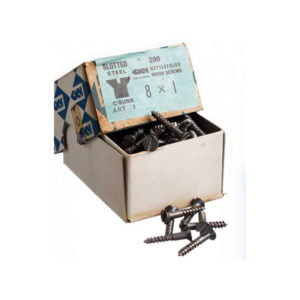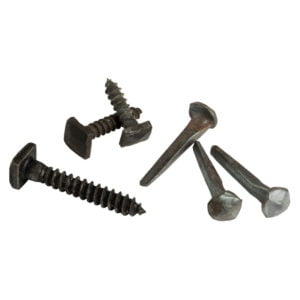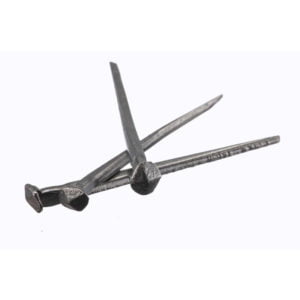Fixing… for strength, without losing ‘The Look’
Back then, and still, fixings were a problem. The first ‘nails’ were wooden trennels – tree nails – dowel pegs, great for holding beams and joinery in place but not much use for attaching ironmongery. The early nails were laboriously produced one by one from soft, wrought iron. Each one required several actions and swift, accurate work. They were clenched easily but easily bent in use and the smooth finish made for poor grip, so many more were required.
Modern nails – forgeries and Forgeries’ – are sheared from sheet steel with a head formed afterwards on the blank ‘cuts’
Early screws had a parallel thread but a great improvement came with the pointed, tapered thread. The counter-sunk head appeared and the domed round-head, both slotted a new tool, the screwdriver. Larger ones – coach screws – used a square head, tightened with a spanner.
DIY stores now offer little except plated, self-tapping, crossheads, easy to use but a real give-away on any period property


